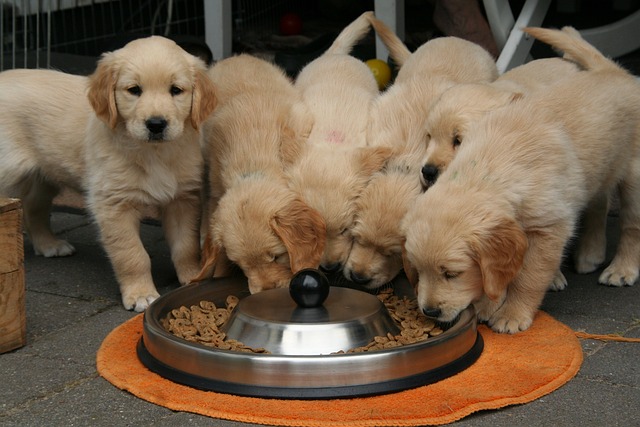I would like to start this article with an incontrovertible assumption: our pets, I’m talking about the most common quadrupeds such as dogs and cats, are mainly carnivores … with a vein of opportunism. I say this because I believe that proper nutrition, without the consumption of packaged products, is necessary both for humans and for animals, but as always it must be done right! And when I hear about a vegan diet for dogs…
But let’s start from the basics, why cook for our pets instead of giving them croquettes or tins?
As told in an old article of mine, in which I spoke with a veterinary expert in nutrition, there are no valid industrial foods for our pets, because even organic products with high-level raw materials still lose many of their nutrients in the processes of processing and above all contain preservatives necessary for long conservation. Also, think about the process the meat has to undergo to become a dry croquette! In fact, it is defined as: dead food enriched with vitamins. If they were so “cool”, because they were balanced, we would eat them too 🙂 The only advantage is that they are comfortable.
Personally, I only use croquettes for emergencies, on those rare occasions when I don’t have time to cook, while I don’t even consider wet food. Rather it is better to recycle digestible leftovers from our kitchens (here are some of my tips).
Home cooking is therefore the best choice for a healthy and sustainable diet, even for our 4-legged friends.
Raw vs cooked
There are several theories about it. Very popular in the Anglo-Saxon world, for example, the BARF diet(BonesAndRawFood) indicates a diet with raw proteins. Digestibility, however, is often questioned, because dogs and cats, unlike their wild cousins, which in any case do not consume raw meat every day and also eat hair, feathers, bones, etc., have a metabolism and a very different. For this reason, the “classic” homemade diet also includes the presence of vegetables and cereals to lower the protein load. As always, however, every nutrition expert veterinarian has his own ideas, theories, and variations. We try to summarize the most widespread and sensible general lines.
Proteins of animal origin
Domestic cooking must always have a predominance of proteins of animal origin: 80% for cats and 60%-80% for dogs.
- Eggs (always better organic) are raw or cooked. If you also want to give the shell (crushed) as an additional source of calcium, you need to boil them to avoid salmonellosis or other bacteria.
- The ideal ground meats are beef, turkey, guinea fowl, duck, and quail ;
in general, pork is not recommended, because it is rich in a type of fat that is difficult for dogs and cats to digest, which can also lead to pancreatic problems. Cats prefer poultry meat. Except for beef which can be given raw, if blast chilled, the rest only cooked.
- Alternate red and white meats and oily fish.
- The innards (kidneys, spleen, heart, liver, lungs) for many are the best part of the beef for others to limit. I use them a lot.
Vegetables and fruit
Although cats have little incentive to consume vegetables (they must be pureed), with dogs if they are used to them as puppies it is simpler. In this case, the portion for dogs can be 30% of the meal, while for cats 10%
But which vegetables to use?
- Green leafy vegetables such as chard, spinach, and chicory.
- Cruciferous vegetables: broccoli, cabbage, etc. (their sulfur scent is usually attractive to our pets);
- Carrots and zucchini;
- Be careful with fruit, especially the ripe one which for them is excessively sugary, yes to the apple, but in moderation. A couple of apples a week for the dog, ½ for the cat at most. But not everyone loves her.
Bases with carbohydrates
Dogs and cats are not predisposed to the digestion of starches with a high glycemic content found in pasta, which is why rice (usually rinsed after cooking), corn pasta, rice pasta or polenta is preferred. Cereals will be the remaining 10% for dogs and cats. I stopped giving cereals and I only use proteins and vegetables.
Some caution
My advice is obviously for healthy dogs and obviously, each animal is a case in itself and it is good to ask your trusted veterinarian but don’t forget! Who is an expert in home nutrition?
Among the absolutely prohibited foods for dogs and cats, we must mention mushrooms, Solanaceae, sweets, liliaceae (garlic, onion, leek, etc.), salt, spices, and sugar.
As far as dairy products are concerned, ricotta and Parmesan can be integrated from time to time (cats love them) because they are low in lactose, but if you also notice a certain intolerance in these dairy products, then milk proteins should be avoided and therefore all the category.

It could cover a range of topics related to health, wellness, beauty, personal growth, and social issues, all from the perspective of striving for beauty, intelligence, youthfulness, and impartiality
